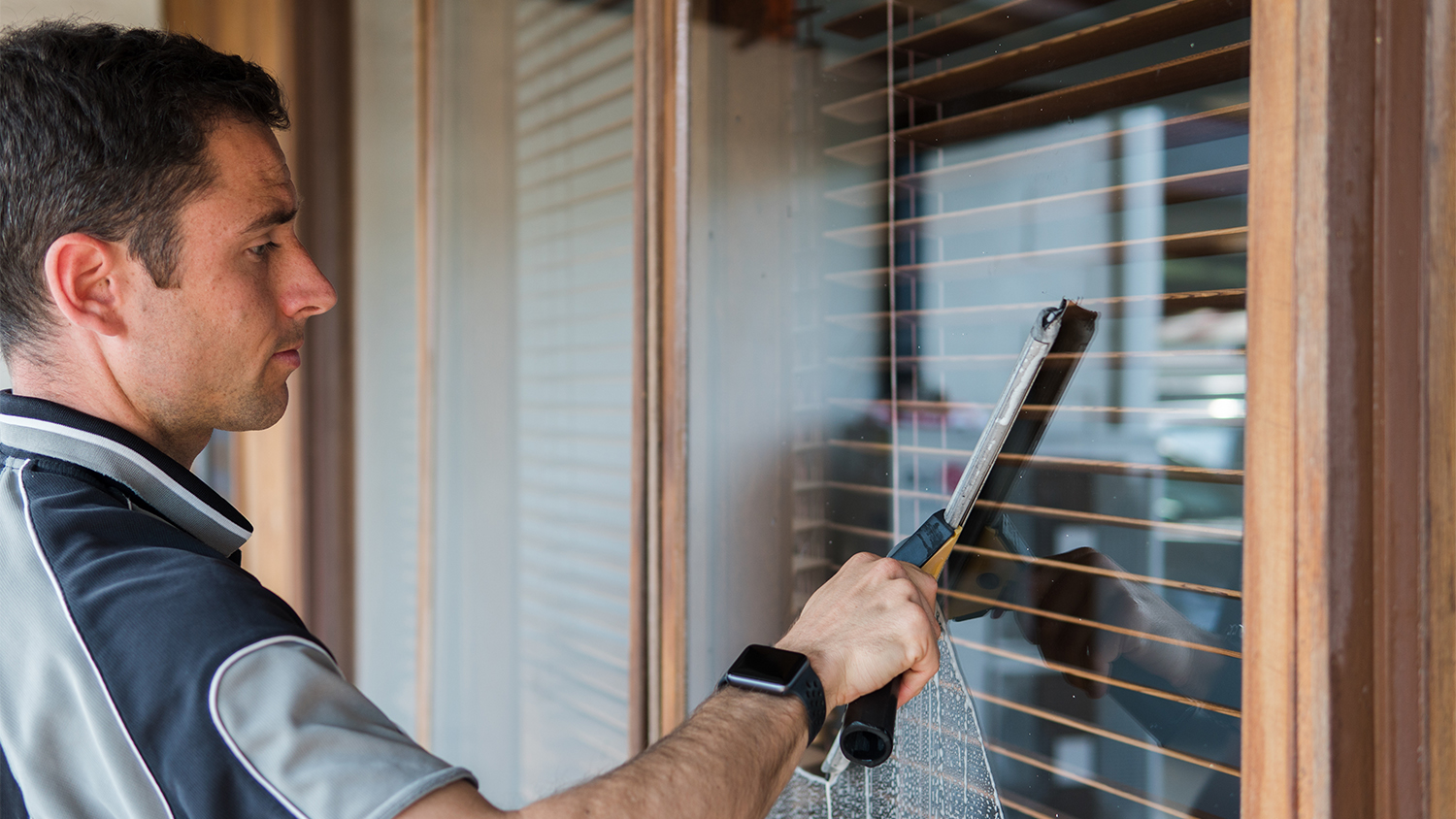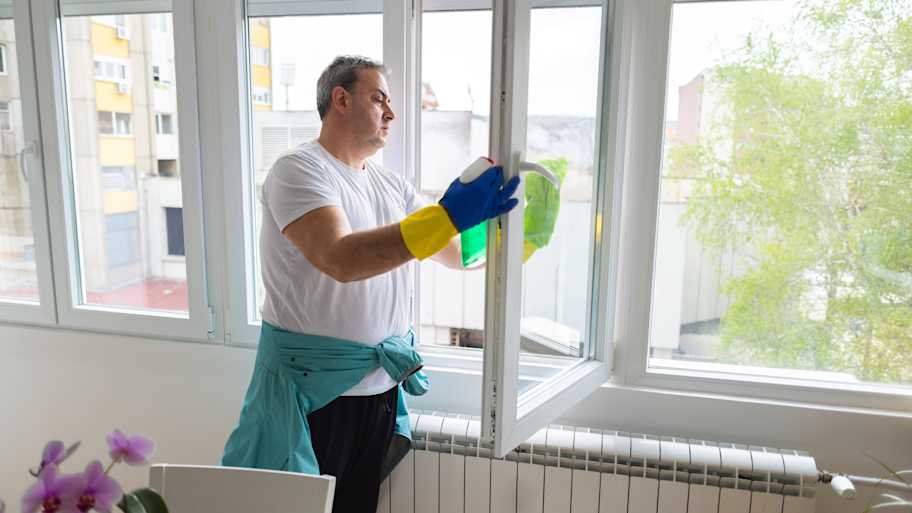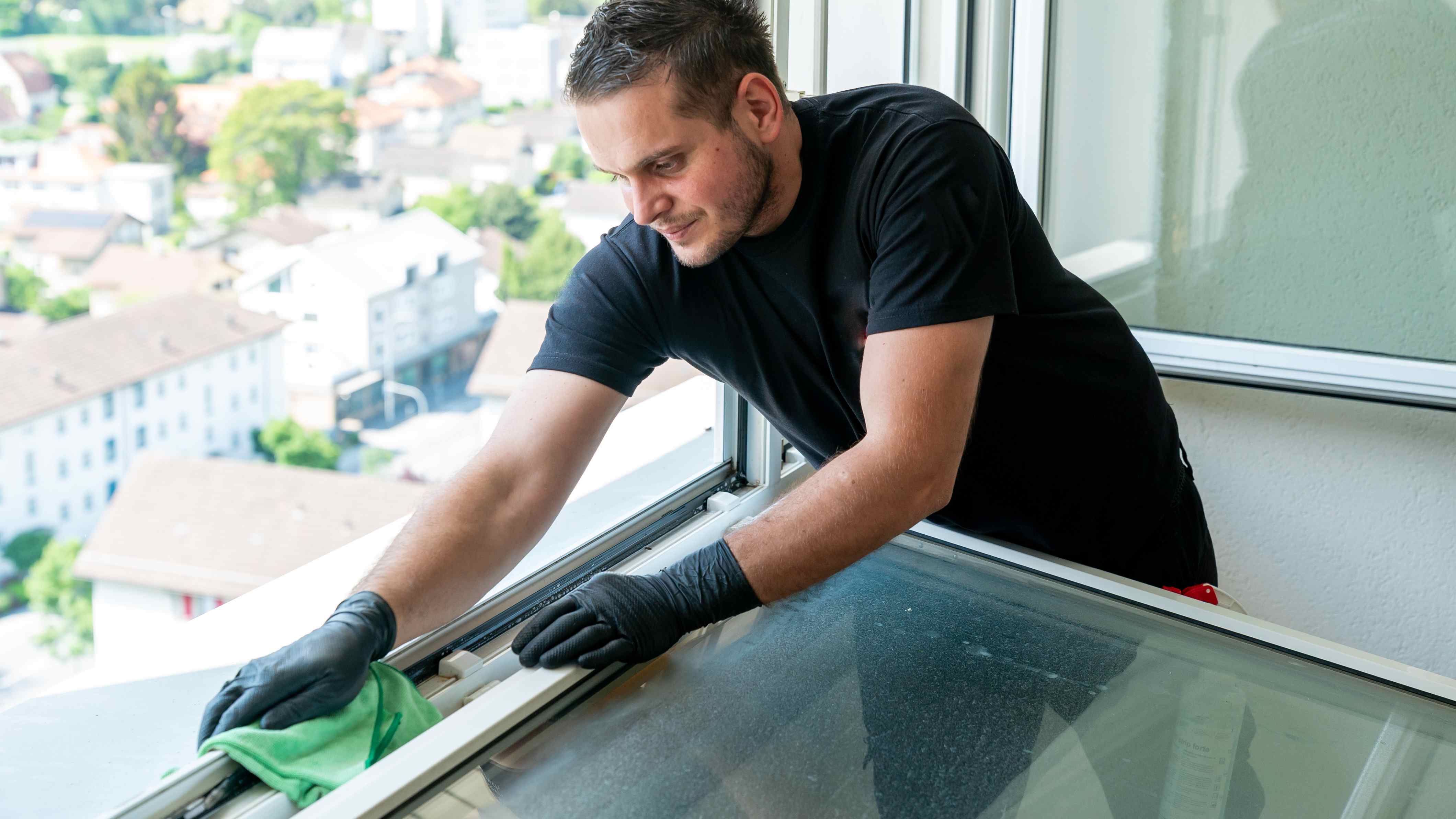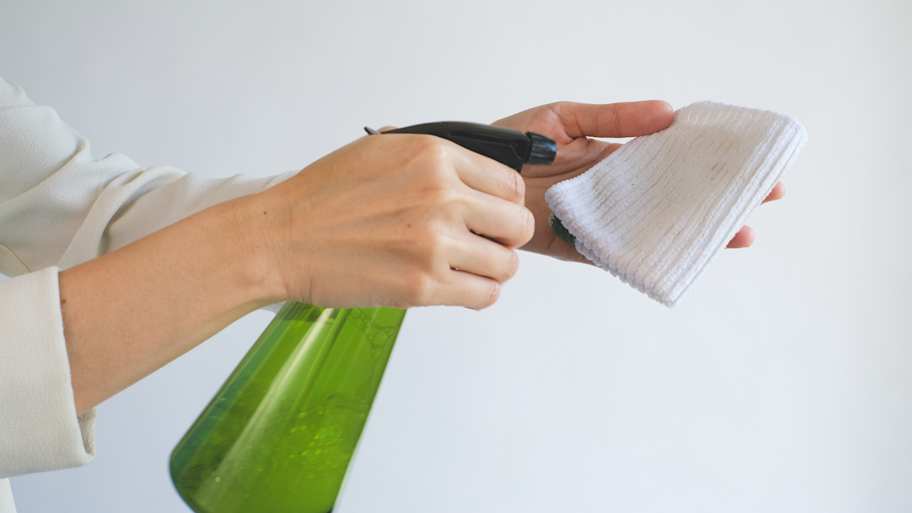
Discover the average window cleaning cost, key price factors, and tips to save money. Get transparent estimates to keep your windows sparkling and your budget on track.
Send window streaks to the sidelines


If window cleaning seems like one of those chores that is impossible to do as perfectly as you’d like, you might just need some advice for simplifying the job. We’ve put together tips for cleaning windows, screens, and tracks. These tips make it so easy to learn how to clean windows without streaks that you’ll wonder why you ever dreaded this chore.
If at all possible, try to clean the windows on a cloudy day or only clean the windows in a shaded section of the house. Direct sunlight will heat up the glass, causing it to reach a high, uncomfortable temperature. Your cleaning solution will dry quickly on heated glass because the moisture evaporates faster than on shaded glass, leaving more streaks on the glass.
You don’t have to clean all the glass on the house on the same day. Some people just clean the windows in one or two rooms each day, for example, to avoid direct sunlight issues.
Before putting cloth to glass, clean the areas around the window, including the sill and frame. Take the time to learn how to deep clean window tracks, too. Removing grime and dust in the tracks keeps the window frame looking fresh and allows the window to open and close smoothly.
Another important preparatory step is learning how to clean window screens. Dust, tree seeds, pollen, and grime left on the screens could cause the windows to look dirty even after you clean the glass.

Newer windows should have a tilt-in design that allows you to clean the exterior of the glass from inside the house. When trying to figure out how to clean outside windows, tilt-in windows make the job far easier than using ladders. If you have to go back and forth inside and outside to clean each window, the process takes far longer.
If you don’t have tilt-in windows, this is a good reason to consider hiring a local window cleaning company that has the equipment and skill to do the job safely and quickly.
One of the most important tips for cleaning window glass is to use a microfiber cloth. Using paper towels, newspaper, or old cotton rags could leave lint and bits of paper on the window, complicating the cleaning process.
Have one set of microfiber cloths to wipe dust away before applying cleaning spray, another set that you use to apply the cleaning spray, and a third set that you use to remove the spray without leaving streaks.
Use a dry microfiber cloth to wipe the exterior and interior of the glass. Removing any dry dust and pollen from the glass will make it easier to clean the window with the cleaning spray later. The exterior of the window glass will probably contain more dust and other contaminants than the interior.

Whether you purchase glass cleaner at the store or figure out how to make homemade window cleaner, always apply the cleaning solution to the cloth instead of directly on the glass. If you spray the cleaner on the glass, it may run down the surface of the window, impacting the frame and creating a greater chance of leaving streaks.
Start at the top of the window and wipe across while moving downward. Try to use the same technique and wiping direction on each window so you can always be confident you wiped every spot on the glass.
When cleaning a pane of glass, give yourself time to finish it in one step. After using the microfiber cloth with the cleaning spray to wipe down the window, immediately use the dry cloth to wipe away the cleaning solution. If you have to stop cleaning a particular window in the middle of the process, the chance of having streaks will increase.
If you need tips regarding cleaning windows with stubborn streaks left behind, use a little extra cleaning solution to handle streaks. Spray the cleaning solution on the cloth and focus on trying to remove the streak instead of wiping down the entire pane of glass again. Because you’re only focusing on a small area of the glass, it’ll be easier to apply the cleaning solution and wipe it dry with a clean cloth before it has a chance to evaporate and leave streaks.
From average costs to expert advice, get all the answers you need to get your job done.

Discover the average window cleaning cost, key price factors, and tips to save money. Get transparent estimates to keep your windows sparkling and your budget on track.
In addition to cleaner panes, there are many more benefits to hiring a professional window cleaner, including saving time and identifying potential problems.

Want to brighten up the interior of your home and maintain clear windows? Use this guide on how to clean windows to keep your glass clear and streak-free.

Professional window cleaners aren’t all cut from the same pane of glass. Our guide will clear up how you can find (and hire) the best window cleaning service.

Save money and still get that professional, streak-free shine on your windows using this guide on how to make homemade window cleaner.

Every homeowner should know how to clean their outside windows, especially if they live in a multi-story home. Here’s how to stay safe while washing outdoor windows.